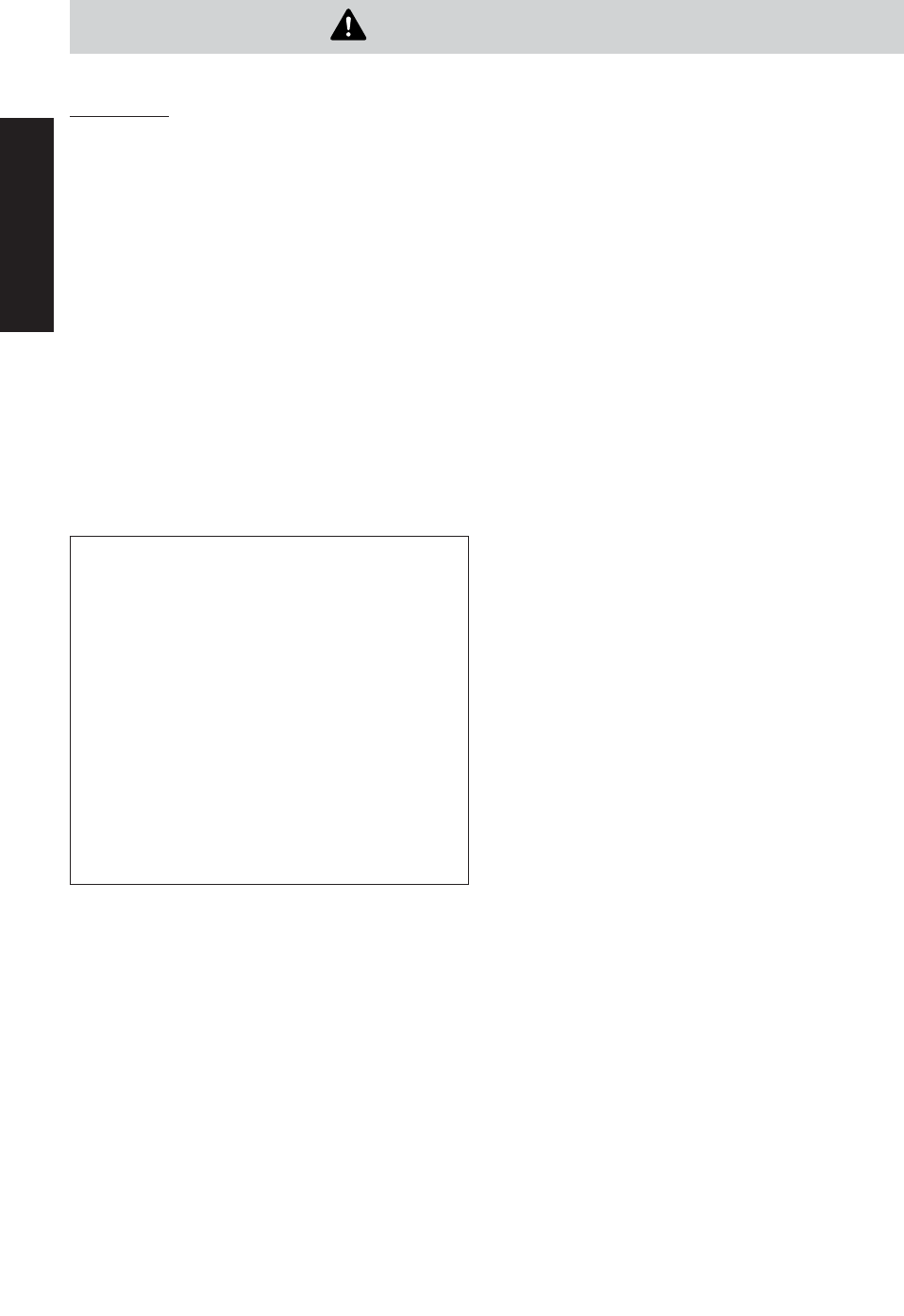
Before Operation
8
Follow These Safety Precautions When Cooking in Your Oven
Practical Hints
IMPORTANT
Proper cooking depends upon the power, the
time setting and quantity of food. If you use a
smaller portion than recommended but cook at
the time for the recommended portion, fire could
result.
1) HOME CANNING / DRYING FOODS / SMALL
QUANTITIES OF FOODS
DO NOT use your oven for home canning. Your
oven cannot maintain the food at the proper
canning temperature. The food may be
contaminated and then spoil.
DO NOT use the microwave oven to sterilize
objects (baby bottles, etc.). It is difficult to keep
the oven at the high temperature needed for
sterilization.
DO NOT dry meats, herbs, fruits or vegetables in
your oven. Small quantities of food or foods with
low moisture content can dry out, scorch or catch
on fire if overheated.
2) POPCORN
Popcorn must be popped in a microwave oven
corn popper. Microwave popcorn which pops in
its own package is also available. Follow popcorn
manufacturers’ directions and use a brand
suitable for the cooking power of your microwave
oven.
CAUTION:
When using pre-packaged microwave
popcorn, you can follow recommended
package instructions or use the Popcorn
Button (refer to page 18). Otherwise, the
popcorn may not pop adequately or may
ignite and cause a fire. Never leave oven
unattended when popping popcorn. Allow the
popcorn bag to cool before opening, always
open the bag away from your face and body to
prevent steam burns.
3) DEEP FAT FRYING
DO NOT deep fat fry in your oven. Cooking oils
may burst into flames and may cause damage to
the oven and perhaps result in burns. Microwave
utensils may not withstand the temperature of the
hot oil, and can shatter or melt.
4) FOODS WITH NONPOROUS SKINS
DO NOT COOK/REHEAT WHOLE EGGS, WITH
OR WITHOUT THE SHELL. Steam buildup in
whole eggs may cause them to explode, and
possibly damage the oven or cause injury.
Reheating SLICED hard-boiled eggs and cooking
SCRAMBLED eggs are safe.
Potatoes, apples, whole squash, chicken wing
and sausages are examples of foods with non-
porous skins. These types of foods must be
pierced before microwave cooking to prevent
them from exploding.
CAUTION:
Cooking dry or old potatoes can cause fire.
5) CERAMIC TRAY / COOKING UTENSILS / FOIL
Cooking containers get hot during cooking. Use
potholders when removing containers and
Ceramic Tray from the oven or when removing
lids or plastic wrap covers from cooking
containers, to avoid burns.
Ceramic Tray will get hot during cooking. It should
be allowed to cool before handling or before
placing paper products, such as paper plates,
napkins or microwave popcorn bags, in the oven
for microwave cooking.
During cooking, heat is transferred from the hot
food to the cooking container and from the
container to Ceramic Tray. Ceramic Tray can be
very hot after removing cooking containers from
oven.
When using foil, skewers, warming rack or
utensils made of metal in the oven, allow at least
1-inch (2.5 cm) of space between metal material
and interior oven walls. If arcing occurs (sparking)
remove metal material (skewers etc.) and/or
transfer to a non-metallic container.
Dishes with metallic trim should not be used
during Microwave or Combination cooking,
arcing may occur.
6) PAPER TOWELS / CLOTHS
DO NOT use paper towels or cloths which
contain a synthetic fiber woven into them. The
synthetic fiber may cause the towel to ignite.
Use paper toweling under supervision.
DO NOT use paper bags or recycled paper
products in the microwave oven.


















